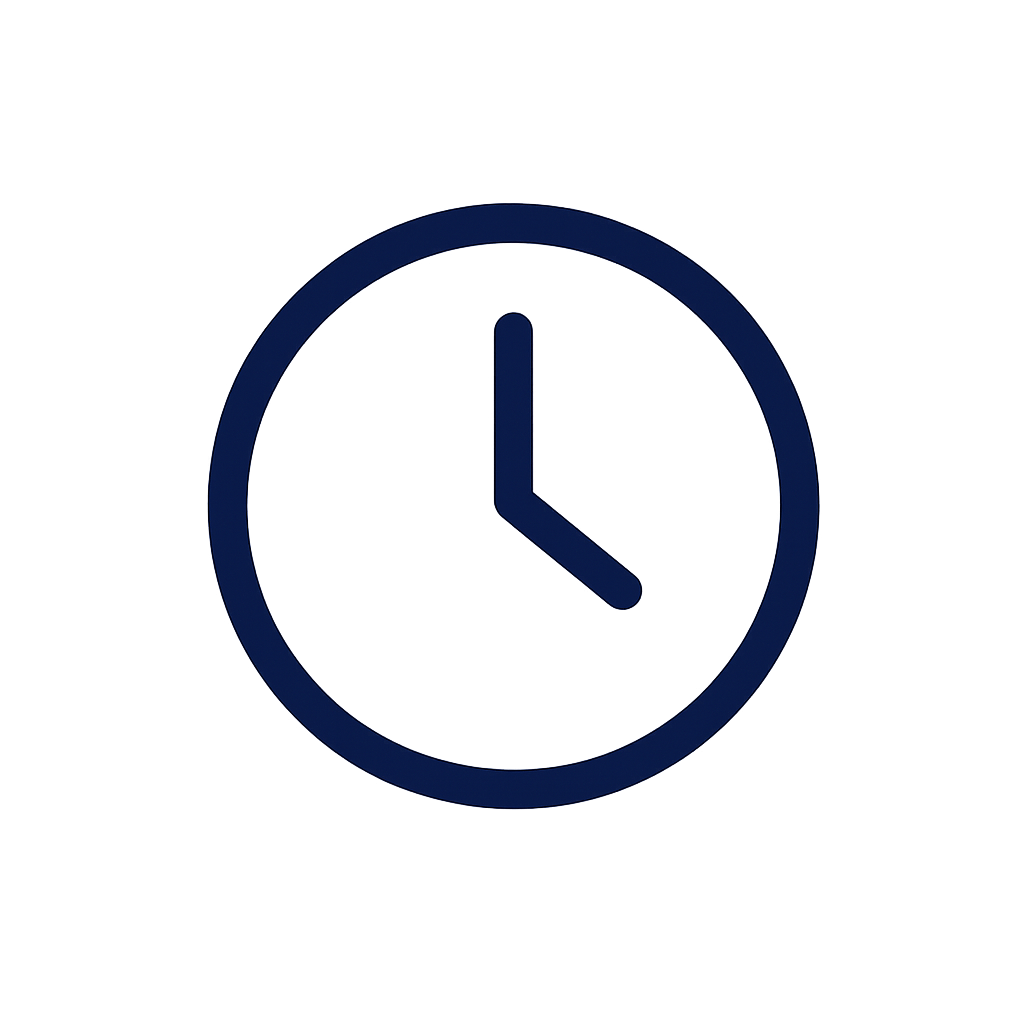Atlas Systems Named a Representative Vendor in 2025 Gartner® Market Guide for TPRM Technology Solutions → Read More

What are L1, L2, & L3 IT Support and their Significance?

13 min read | Last Updated: 25 Nov, 2025
TL;DR
- Tiered expertise model: L1 handles basic troubleshooting using predefined scripts, L2 manages complex escalated issues requiring deeper expertise, L3 resolves critical problems through developer collaboration
- Resource allocation optimization: Structured escalation prevents high-level engineers from handling routine tasks, matches issues with appropriate expertise, and reduces downtime for enhanced productivity
- Implementation best practices: Establish clear escalation criteria, provide continuous tier-specific training, use automated ticketing systems for prioritization, and maintain centralized knowledge bases
- Atlas Systems solutions: Provides automated tools for L1, advanced analytics for L2, and specialized diagnostic tools for L3 to streamline support efficiency
What is IT Support?
IT support refers to the range of services that assist individuals and organizations in managing and maintaining their technology infrastructure. It involves troubleshooting technical issues, providing guidance on software and hardware usage, and ensuring systems run smoothly. IT support is a critical function for businesses of all sizes, as it helps maintain productivity, prevent data loss, and enhance cybersecurity.
Effective IT support encompasses reactive problem-solving, proactive maintenance, and strategic planning. It includes regular system updates, security patches, and performance optimizations to ensure technology remains reliable and secure. By identifying potential issues before they escalate, IT support teams contribute significantly to minimizing disruptions and enhancing business continuity.
IT support is pivotal in guiding organizations through technology upgrades and transformations. Whether implementing new software solutions, migrating to cloud environments, or adopting emerging technologies, IT support teams play a crucial role in facilitating smooth transitions and minimizing the risks associated with technological change. This strategic aspect of IT support empowers businesses to innovate confidently while maintaining operational stability.
What are L1, L2, & L3 IT Support And Their Significance?
Businesses rely heavily on technology to streamline operations, enhance productivity, and deliver superior customer experiences. However, as technology becomes more complex, so do the challenges associated with maintaining and troubleshooting IT systems. This is where robust IT support comes into play, ensuring businesses can operate seamlessly without disruptions. Organizations often adopt a tiered IT support model to manage IT issues effectively, commonly categorized into L1, L2, and L3 support levels. Each level serves a distinct purpose and involves varying expertise and problem-solving capabilities.
A well-structured IT support framework is crucial for maintaining operational efficiency. When technical glitches occur, the speed and accuracy of resolution can significantly impact business continuity. By implementing tiered IT support, companies can allocate resources efficiently, ensuring that more straightforward issues are addressed quickly while more complex problems are escalated to skilled specialists. This optimizes the support process and enhances user satisfaction by minimizing downtime.
The tiered support model, comprising L1, L2, and L3 support, is more than just a hierarchy of technical skills. It represents a strategic approach to managing IT incidents, streamlining workflows, and achieving operational excellence. Each support level is critical in addressing different issues, from routine troubleshooting to advanced system diagnostics and problem resolution. The effectiveness of this model lies in its structured escalation process, which ensures that issues are resolved by the right team with the appropriate level of expertise.
Why Does Your Business Need IT Support?
Every business depends on technology to execute core functions. Whether it’s managing customer data, processing transactions, or enabling remote work, IT systems play an integral role. Without proper IT support, businesses may face prolonged downtimes, security breaches, and operational inefficiencies. Investing in reliable IT support ensures that technical issues are resolved swiftly, allowing companies to focus on growth and innovation.
Beyond addressing immediate technical issues, IT support provides a safety net that enhances organizational resilience. When unexpected challenges arise—such as system failures or cyber threats—a dedicated IT support team can respond quickly to mitigate risks and restore operations. This quick response capability is essential for minimizing financial losses and maintaining customer trust, critical components of a successful business strategy.
IT support also contributes to long-term strategic planning by offering insights into technology trends and infrastructure optimization. By collaborating with IT professionals, businesses can make informed decisions regarding technology investments, streamline processes, and identify opportunities for digital transformation. This proactive approach keeps the company competitive and enhances operational efficiency and adaptability.
A strong IT support framework allows businesses to provide better customer service. When customer-facing technologies function seamlessly, it leads to a positive user experience and fosters brand loyalty. Through smooth online transactions, responsive customer service platforms, or robust data security measures, IT support shapes customer perceptions and drives business success.
How to Set Up Tiered IT Support
Establishing a tiered IT support structure requires careful planning and strategic allocation of resources. The first step involves assessing the organization’s IT needs and defining the common issues. Once the support requirements are identified, the next step is to classify these issues based on complexity and frequency. This helps assign the right support level to handle specific problems, ensuring a balanced workload among IT teams.
A successful tiered support model also involves clear communication channels and escalation procedures. When a support request is logged, it should be directed to the appropriate tier, starting with L1, for basic troubleshooting. If the issue requires more technical expertise, it is escalated to L2 and L3 for the most complex problems. This structured approach enhances efficiency and improves customer satisfaction by reducing resolution times.
Business management must invest in training and tools to enable their IT support teams to perform effectively. Providing continuous learning opportunities and access to advanced diagnostic tools empowers support personnel at all levels. This increases problem-solving efficiency, boosts team morale, and fosters a culture of continuous improvement.
IT Support Tiers: L1, L2, L3

- L1 Support: The first line of defense, responsible for handling fundamental technical issues, answering queries, and managing service requests. L1 support teams typically follow predefined scripts and standard operating procedures.
- L2 Support: Focuses on more complex issues that require more profound technical knowledge. L2 technicians handle escalated tickets from L1, perform in-depth troubleshooting, and work closely with development and engineering teams when needed.
- L3 Support: Consists highly specialized experts who manage the most complex and critical technical issues. L3 teams often collaborate with software developers and engineers to resolve deep-rooted problems and implement long-term solutions.
L1, L2, L3 Support Best Practices
.webp?width=651&height=540&name=L1%2c%20L2%2c%20L3%20Support%20Best%20Practices%20-%20visual%20selection%20(1).webp)
- Implement a Clear Escalation Process: Establishing a well-defined escalation process is crucial for efficiently managing IT issues across different support tiers. A structured approach ensures that problems are addressed by the appropriate support level, reducing the risk of delays and enhancing resolution times. This involves creating specific criteria for when an issue should move from L1 to L2 or L3 support, along with clear communication channels between teams. A transparent escalation process improves efficiency and enhances customer satisfaction by preventing issues from getting stuck at lower levels of support.
- Provide Continuous Training: The technology landscape is constantly evolving, and IT support teams need to stay updated with the latest tools, software, and best practices. Regular training sessions and certifications can empower support staff with the knowledge they need to handle new issues effectively. For L1 support, training can focus on customer service and basic troubleshooting, while L2 and L3 teams can delve into advanced diagnostics, software management, and IT infrastructure management support. Continuous learning initiatives contribute to faster problem resolution and help maintain high standards of IT operational excellence.
- Establish Well-Defined Roles and Responsibilities: Clearly defining roles within each support tier is essential for operational efficiency. Each team member should understand their duties, from basic troubleshooting in L1 to advanced issue resolution in L3. Well-defined roles minimize overlap in responsibilities and prevent confusion during the escalation process. This practice fosters accountability, ensuring that support tickets are managed efficiently and that no issue is left unresolved due to ambiguity in task ownership.
- Use Automated Tools for Ticketing and Tracking: Leveraging automated tools for managing support tickets can significantly enhance efficiency. These tools help streamline the logging, categorizing, and assigning support requests. Automated systems can prioritize tickets based on urgency and complexity, ensuring critical issues are quickly escalated. Tracking tools provide valuable insights into support team performance and help identify patterns in recurring issues, enabling organizations to address root causes proactively.
Emerging Trends in IT Tiered Support
With the rise of artificial intelligence and automation, IT support is evolving rapidly. Automated chatbots and AI-driven diagnostics are becoming integral to L1 support, allowing human agents to focus on more complex tasks. Also, predictive analytics are helping IT teams anticipate potential issues before they arise, enhancing proactive support strategies.
Remote support is another growing trend driven by the increasing adoption of hybrid work models. IT support teams are now equipped to resolve issues without being physically present, utilizing remote access tools and virtual troubleshooting. This reduces response times and broadens the reach of IT support services.
As businesses prioritize customer experience, IT support models incorporate omnichannel support strategies. This involves offering assistance through multiple channels such as phone, email, chat, and social media, ensuring that users receive help through their preferred method. Advanced ticketing systems and knowledge bases empower users to find solutions independently, reducing the load on IT support teams.
There is a shift towards leveraging data analytics to measure IT support performance. Metrics such as first-contact resolution rates, average response times, and customer satisfaction scores provide valuable insights that drive continuous improvement in support processes.
Implementing a Tiered IT Support Structure
Implementing a tiered IT support structure involves establishing a strategic framework that categorizes IT issues based on complexity and allocates resources efficiently. The first step is to assess the organization's IT landscape, identifying common technical challenges and defining support requirements. This assessment helps determine the appropriate support tiers, typically L1, L2, and L3, and sets precise criteria for issue escalation. Properly defining the scope of each support tier ensures that the right expertise is applied to the correct problems, enhancing efficiency and reducing resolution times.
Developing robust processes and workflows is another critical aspect of implementing a tiered support model. This includes creating a streamlined ticketing system that allows for effective logging, tracking, and prioritization of IT issues. Automation tools can significantly aid this process by categorizing issues automatically and routing them to the appropriate support tier. Clear documentation of processes and maintaining a knowledge base also contribute to quicker resolutions, as support teams can access standardized troubleshooting guides and historical data.
Effective communication and collaboration are vital when implementing a tiered IT support structure. Regular training and workshops can ensure support teams understand their roles within the tiered model. Establishing open communication channels between different support levels promotes knowledge sharing and fosters collaboration. Continuously monitoring performance metrics, such as average response time, ticket resolution rates, and customer satisfaction, provides valuable insights into the effectiveness of the support structure. These metrics enable organizations to refine their approach, optimize workflows, and maintain high standards of IT operational excellence.
Benefits of Help Desk Support Tiers
.webp?width=651&height=505&name=Benefits%20of%20Help%20Desk%20Support%20Tiers%20-%20visual%20selection%20(2).webp)
- Improved Efficiency and Productivity: Implementing a tiered support model ensures that IT issues are addressed by the appropriate level of expertise. L1 handles fundamental issues swiftly, while complex problems are escalated to L2 and L3 experts. This structured approach minimizes bottlenecks and optimizes resource allocation, enhancing overall productivity.
- Cost-Effective Resource Management: Organizations can allocate their IT resources more strategically by categorizing support into tiers. Entry-level support personnel handle routine tasks, reducing the need for highly specialized staff to address fundamental issues. This tiered approach helps in managing costs while maintaining service quality.
- Faster Issue Resolution: The tiered system allows for efficient issue prioritization and escalation. Simple issues are resolved quickly at the L1 level, while complex challenges are directed to higher tiers without delay. This streamlined process reduces downtime and enhances user satisfaction.
- Enhanced Customer Satisfaction: When issues are resolved promptly and effectively, it leads to a positive user experience. The tiered support model ensures that customer queries are handled professionally, with swift resolution times contributing to higher satisfaction rates.
- Scalability and Flexibility: As businesses grow, their IT needs evolve. A tiered support model offers scalability, allowing organizations to expand their support capacity seamlessly. Additional support tiers or resources can be integrated without overhauling the existing system.
- Specialized Expertise Utilization: The tiered approach ensures that specialized knowledge is applied where needed. L3 support, for example, involves experts with in-depth knowledge of complex systems, allowing businesses to leverage high-level expertise only when necessary, optimizing operational efficiency.
Build a Robust IT Support System With Atlas Systems
Atlas Systems offers robust solutions to streamline IT support across L1, L2, and L3 tiers. For L1 support, Atlas provides automated tools and self-service portals that enable quick resolutions to common issues, reducing workload on support staff. This enhances response times and improves customer satisfaction. At the L2 level, Atlas Systems integrates advanced analytics and diagnostic tools, allowing support teams to efficiently address more complex issues by collaborating with other departments and leveraging a centralized knowledge base. For L3 support, Atlas provides specialized tools that assist advanced technical teams with deep-dive analyses and development-related challenges. The platform's seamless communication channels and robust ticketing system ensure efficient issue escalation and transparency throughout the support process, ultimately boosting service efficiency and delivering a superior customer experience.
A well-executed tiered IT support model is a cornerstone for robust IT infrastructure service, promoting stability, efficiency, and growth. Prioritize a structured approach to IT support to thrive in a technology-driven world, and deliver value to your internal teams and customers.
FAQs about L1, L2 and L3 Support
1. How do organizations determine the appropriate support level for an issue?
Organizations determine the appropriate support level for an issue by assessing the complexity, urgency, and nature of the problem. Typically, this process begins with L1 (Level 1) support, which handles basic troubleshooting and everyday issues like password resets, software installations, and general inquiries. Suppose the problem is not resolved at L1. In that case, it is escalated to L2 (Level 2) support, which manages more complex issues that require in-depth technical expertise, such as system configurations, software bugs, and network issues. Finally, if the issue involves deep-rooted problems or requires development support, it is passed on to L3 (Level 3) support, where specialists, such as developers or advanced engineers, address it.
Organizations often implement a ticketing system that categorizes and prioritizes incidents based on predefined criteria. Automated workflows and decision trees help the support team quickly assess where an issue fits within the support hierarchy. Additionally, service-level agreements (SLAs) play a crucial role in defining response and resolution times for different support levels, ensuring that critical issues are escalated appropriately to maintain service quality and efficiency.
2. How do L2 support teams interact with other departments within an organization?
L2 support teams often serve as a bridge between frontline support (L1) and specialized technical teams (L3). Their interaction with other departments is crucial to resolving complex issues efficiently. When an issue escalates to L2, support agents analyze the problem and may collaborate with departments such as IT, development, quality assurance, and network teams to gain insights and resources needed for resolution.
For instance, if the issue involves a software bug, the L2 team might coordinate with the development team to analyze the root cause and deploy a patch. When dealing with hardware-related problems, L2 support might work closely with the IT or procurement teams to arrange repairs or replacements. Additionally, L2 support interacts with the customer service department to keep end-users informed about the status of their issues and manage expectations effectively.
3. How does the tiered support model impact customer satisfaction and service efficiency?
The tiered support model significantly enhances customer satisfaction and service efficiency by providing structured and efficient problem-resolution pathways. At the initial level (L1), customers receive prompt assistance for fundamental issues, which resolves most queries quickly and reduces wait times. When complex problems arise, the seamless escalation to L2 and L3 ensures that specialized experts handle the situation, minimizing downtime and offering tailored solutions.
From an efficiency standpoint, the model optimizes resource allocation by aligning the complexity of issues with the appropriate expertise. This prevents high-level engineers from being overburdened with routine tasks and allows them to focus on critical problems requiring their skills. Also, delineating responsibilities between support levels enhances accountability and transparency within the support process.
Customer satisfaction improves as well, as the structured approach helps manage expectations. When users understand their issue is being escalated to a specialist, trust, and confidence in the support process are fostered. Additionally, well-defined SLAs and communication protocols inform customers about their ticket status, contributing to a positive service experience. The tiered support model balances quick resolutions for simple issues and in-depth support for complex challenges.
4. How can organizations improve collaboration between different support levels?
Improving collaboration between different support levels (L1, L2, and L3) involves implementing effective communication strategies, standardized processes, and knowledge-sharing initiatives. One key approach is establishing a robust ticketing system that ensures seamless transfer of information when issues are escalated. This system should include detailed logs, diagnostic data, and notes from previous interactions to avoid redundant troubleshooting efforts.
Regular cross-functional training and workshops also contribute to improved collaboration. By understanding the roles and challenges of other support tiers, teams can develop a shared perspective on problem-solving. Additionally, creating documentation and maintaining a centralized knowledge base allows support teams to access valuable insights and solutions from previous incidents, reducing unnecessary escalation.
IT leaders can foster collaboration by promoting open communication channels, such as chat tools, regular meetings, and collaborative platforms that connect support staff across all levels. Leadership support is crucial in building a culture of teamwork and recognition, where teams are encouraged to share knowledge and assist each other. Organizations can streamline issue resolution, enhance support quality, and improve customer satisfaction by focusing on these strategies.
.png?width=869&height=597&name=image%20(5).png)

.png?width=300&height=175&name=Rectangle%2034624433%20(2).png)








.png?width=645&height=667&name=Widgets%20(2).png)







